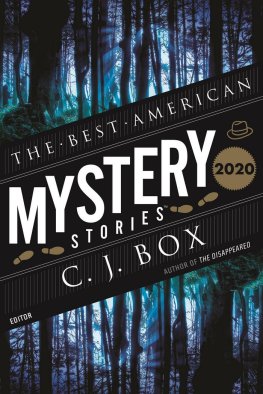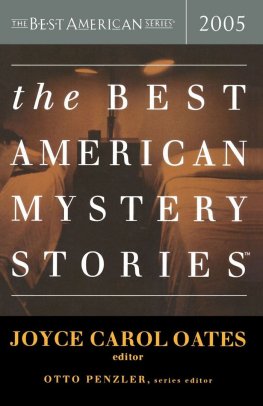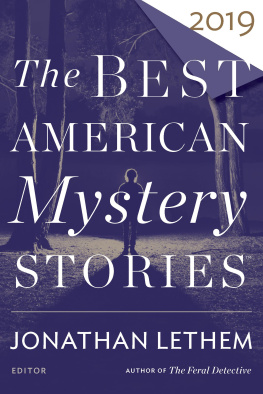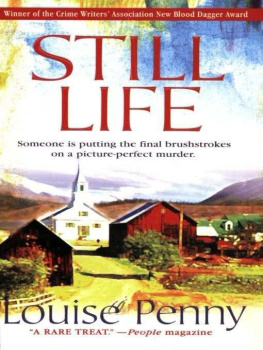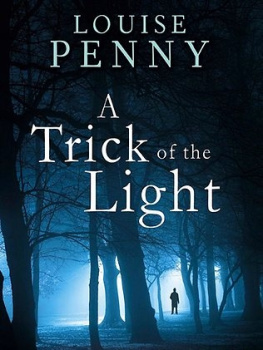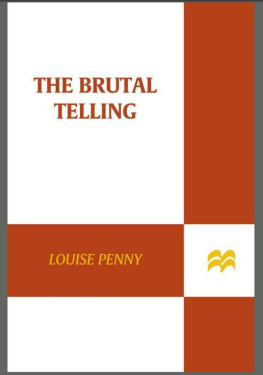Majkl Konnelli - The Best American Mystery Stories 2018
Here you can read online Majkl Konnelli - The Best American Mystery Stories 2018 full text of the book (entire story) in english for free. Download pdf and epub, get meaning, cover and reviews about this ebook. City: New York, year: 2018, publisher: Mariner Books, genre: Detective and thriller. Description of the work, (preface) as well as reviews are available. Best literature library LitArk.com created for fans of good reading and offers a wide selection of genres:
Romance novel
Science fiction
Adventure
Detective
Science
History
Home and family
Prose
Art
Politics
Computer
Non-fiction
Religion
Business
Children
Humor
Choose a favorite category and find really read worthwhile books. Enjoy immersion in the world of imagination, feel the emotions of the characters or learn something new for yourself, make an fascinating discovery.
- Book:The Best American Mystery Stories 2018
- Author:
- Publisher:Mariner Books
- Genre:
- Year:2018
- City:New York
- ISBN:978-0-544-94909-6
- Rating:3 / 5
- Favourites:Add to favourites
- Your mark:
- 60
- 1
- 2
- 3
- 4
- 5
The Best American Mystery Stories 2018: summary, description and annotation
We offer to read an annotation, description, summary or preface (depends on what the author of the book "The Best American Mystery Stories 2018" wrote himself). If you haven't found the necessary information about the book — write in the comments, we will try to find it.
The Best American Mystery Stories 2018 — read online for free the complete book (whole text) full work
Below is the text of the book, divided by pages. System saving the place of the last page read, allows you to conveniently read the book "The Best American Mystery Stories 2018" online for free, without having to search again every time where you left off. Put a bookmark, and you can go to the page where you finished reading at any time.
Font size:
Interval:
Bookmark:
THE BEST AMERICAN MYSTERY STORIES 2018
Edited by Louise Penny
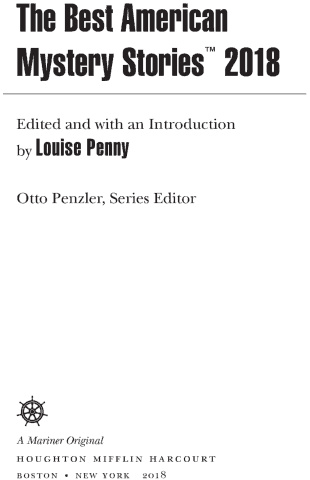
Foreword
It is enormously gratifying and comforting to be reminded that readers continue to have affection for mystery fiction, a field in which I have found profound pleasure in both my personal and professional lives.
One recent bestseller list in the New York Times (generally regarded as the most important one, however flawed and suspect its methodology may be) placed eleven mystery/crime/suspense/thriller fiction titles in the top fifteen. For more than a quarter of a century, this distinguished genre has comprised at least half the titles on virtually every one of those lists.
We all became so used to seeing the most widely read mystery writers on the list that we would have been shocked or baffled to see a year pass without finding certain names in their customary spot at or near the top. The books by James Patterson, Sue Grafton, Dick Francis, Robert B. Parker, Harlan Coben, Mary Higgins Clark, Elizabeth George, P. D. James, John le Carr, Elmore Leonard, Lee Child, Jeffery Deaver, Nelson DeMille, Michael Connelly, John Grisham, Scott Turow, and many others continued to find a wide readership year after year, to the delight of their legions of fans.
What has recently surfaced as a surprise to me has been the evident resurrection of the mystery short story. It has been axiomatic in the publishing world that books of short stories, whether a collection (all stories written by one author) or an anthology (featuring stories by multiple authors), simply dont sell. These words of wisdom and warning were imparted to me at the very beginning of my career as a publisher.
Not being wise enough to heed the advice of professionals who knew what they were doingwhich I quickly concede I did notI started my own publishing company, the Mysterious Press, by publishing collections of short stories. Ross Macdonald, Cornell Woolrich, Donald E. Westlake, Patricia Highsmith, and Stanley Ellin were among the authors who allowed me to publish their stories. Those collections had some success and the Mysterious Press went on to publish novels by some of those outstanding authors, and that imprint remains happily alive today as part of Grove Atlantic.
Furthermore, as poorly as short story collections sell, I was assured that anthologies perform even worse. As an unrepentant lover of the short form, I need to point out that I have never had any difficulty in finding enough books to sate my appetite. An entire wall in my library, with a ceiling so high that I need a rolling ladder to reach the top shelves, is devoted exclusively to anthologies, and author collections number in excess of a thousand volumes. A large section of my bookshop is devoted to anthologies (not counting the shamelessly egotistical shelves devoted to those I edited).
How can all this publishing knowledge pertain when so many anthologies continue to be published? This series, The Best American Mystery Stories, is now twenty-two years old. Random House, under its Vintage imprint, has been publishing my series of Big books (The Big Book of Christmas Mysteries, The Big Book of Sherlock Holmes Stories, The Big Book of Female Detectives, etc.) annually for more than a decade. Is this just a display of generosity, of downright charity, on the part of publishing houses? Is the corporate mindset one that indicates it doesnt mind losing money on these publications because it is in the public interest to issue these profit-draining volumes?
This situation is being raised because I noticed this year that an astonishing number of anthologies have been published. Inevitably, a few have come from major houses, but a large number have come from small, even out-and-out tiny, publishers. Many are regional, where it seems that groups of mystery writers, almost certainly all known to each other in writing groups or other coteries, contribute stories to books, almost always in trade paperback form. These anthologies often have themes, sometimes outr, that elicit occasionally clever, creative stories that might not otherwise have found a home.
In 2017 more than forty such anthologies were published, at least half of which came from publishing houses that have never issued any other books. Whether they are one-and-done or the beginning of a lasting contribution to the mystery field remains to be seen. The literary genre described as mystery is large and inclusive. I define it liberally, to mean any work of fiction in which a crime, or the threat of a crime, is integral to the theme or plot, and you will find a great range of styles and subgenres in the present volume of BAMS.
A contributing factor to this cornucopia of crime is the ease with which individuals or groups can produce their own printed volumes at reasonable cost. It appears likely that the proliferation of independently produced books is a factor in the reduction of electronic magazines, which were growing in number as recently as a half-dozen years ago. Many of the best have fallen by the wayside, notably Thuglit, which had numerous stories selected among the fifty best of the year.
The person who reads all these e-zines and anthologies is my associate, Michele Slung, without whose extraordinary good taste and speed-reading skills these annual volumes would take three years to produce. Reading or at least partially reading more than three thousand stories a year, she passes along likely candidates for me to read, from which I cull the fifty best, which are then read by the guest editor, who selects the twenty that go into the book. All this dedication to the written word places me further in her debt, as has been the case for all twenty-two editions of this series.
Speaking of being in debt, words would be difficult to adequately describe my gratitude to Louise Penny, the guest editor for BAMS 2018. Best-selling writers are besieged relentlessly by demands on their time. Touring to promote a bookand not only in Americagive a speech or a talk, read a manuscript in order to give it a blurb for the dust jacket, participate in a charitable event, write a story or articlethe requests go on and on. And since authors are people too, dealing with their personal livescooking, shopping, doing laundry, paying bills, having time for family and friendsuses up still more of those precious twenty-four hours of the day. But Louise Penny agreed to be the guest editor as soon as I asked her.
As the author of thirteen novels in thirteen years, Louise Penny has enjoyed tremendous and well-deserved success with her series about Chief Inspector Armand Gamache, head of the homicide department of the Suret de Quebec, a character heavily based on her husband of more than twenty years before his death in September 2016. She has been a bestseller for a decade and has won or been nominated for every major award in the mystery world, often many times. Set in her native Canada, her beautifully written books are among the rare few works reminiscent of the golden age of the British detective novel.
A debt of gratitude is also due to the previous guest editors, without whose generosity this series would not have had the success it happily enjoys, so sincere thanks to Robert B. Parker and Sue Grafton, who were followed by Ed McBain, Donald E. Westlake, Lawrence Block, James Ellroy, Michael Connelly, Nelson DeMille, Joyce Carol Oates, Scott Turow, Carl Hiaasen, George Pelecanos, Jeffery Deaver, Lee Child, Harlan Coben, Robert Crais, Lisa Scottoline, Laura Lippman, James Patterson, Elizabeth George, and John Sandford.
I would like to take a brief moment to mention the passing late last year of the mystery communitys sweetheart, Sue Grafton, the author of the universally loved alphabet series featuring her series character Kinsey Millhone, and the guest editor for the second book in the
Font size:
Interval:
Bookmark:
Similar books «The Best American Mystery Stories 2018»
Look at similar books to The Best American Mystery Stories 2018. We have selected literature similar in name and meaning in the hope of providing readers with more options to find new, interesting, not yet read works.
Discussion, reviews of the book The Best American Mystery Stories 2018 and just readers' own opinions. Leave your comments, write what you think about the work, its meaning or the main characters. Specify what exactly you liked and what you didn't like, and why you think so.

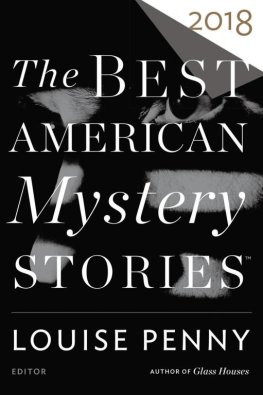
![Majkl Konnelli - The Night Fire [Harry Bosch - 22]](/uploads/posts/book/873181/thumbs/majkl-konnelli-the-night-fire-harry-bosch-22.jpg)

![Majkl Konnelli - The Dark Hours [Harry Bosch - 23]](/uploads/posts/book/926732/thumbs/majkl-konnelli-the-dark-hours-harry-bosch-23.jpg)
